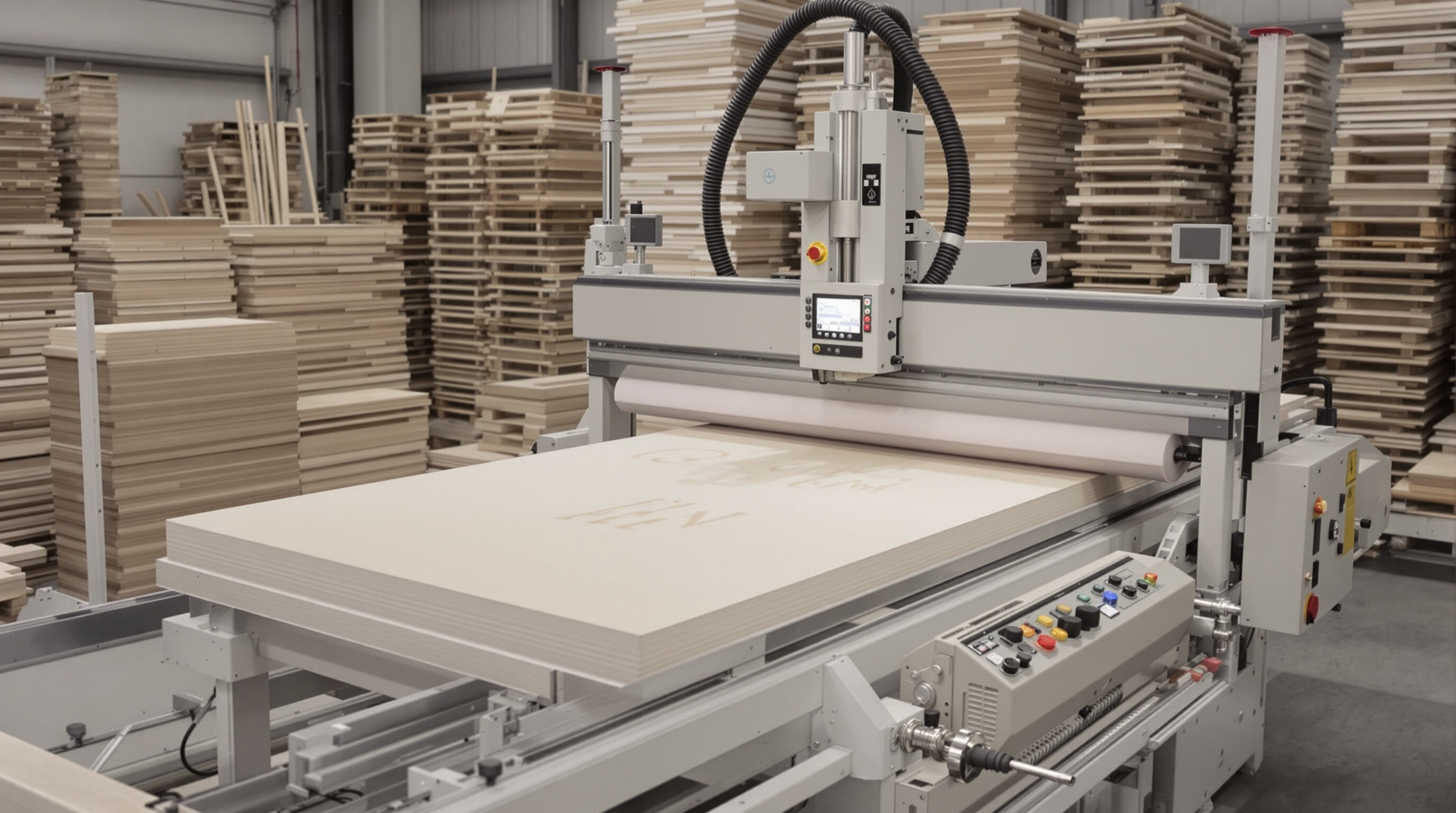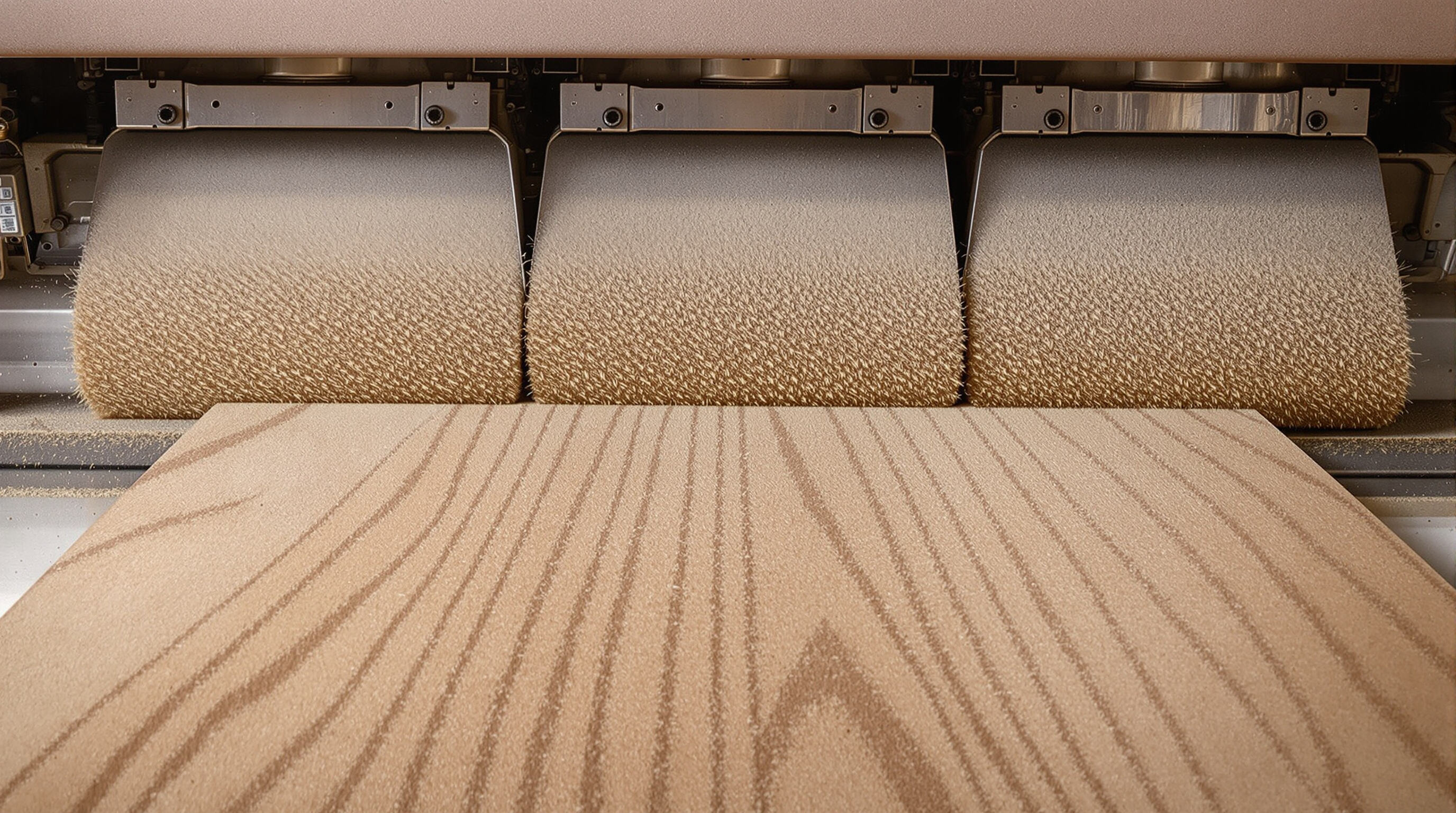The Evolution of Brush Sanding Machine Technology

From Manual to Automated Brush Sanding Machines
Woodworking shops have seen major changes since moving away from hand operated brush sanders to their automated counterparts. The time saved is pretty impressive too, with some operations cutting down processing by around two thirds compared to what workers used to handle manually. Back in the day when these machines first came out, they still needed skilled operators making constant adjustments to pressure levels and speeds during operation. This meant there was always going to be some variation between pieces, especially when running large batches of work through them. Today's equipment works differently though. Most modern setups incorporate PLCs or programmable logic controllers that can run exactly the same sanding pattern over and over again. These systems manage to maintain really tight surface finish specifications, typically within plus or minus 0.1 millimeters, whether working with solid hardwoods or those composite materials that are so popular nowadays in furniture manufacturing.
Integration of Smart Sensors in Modern Brush Sanding Machines
Modern brush sanders now come with smart sensors connected via the internet of things that keep track of important factors like how tight the belt is, the force the motor applies, and even how thick the material being worked on actually is. Some models also feature built-in lasers that spot bumps and dips in surfaces down to just 5 microns accuracy. When these lasers find something uneven, they automatically change how hard the brushes press against the surface so it doesn't get sanded too much. The result? Manufacturers report cutting down on wasted materials by around 22 percent when compared to older machines without these sensors. Plus, because the system knows when abrasives are wearing out, belts last longer before needing replacement. This makes sense both from an environmental standpoint and for saving money in the long run.
AI-Driven Sanding Machines and Adaptive Algorithms
The latest generation of these machines uses machine learning algorithms that have been trained across data from over 50 different types of wood and around 120 thousand sanding cycles. The AI systems work out the best grits to use, set the right RPMs, and adjust how fast the material moves through based on what they see happening right now. Most of the time, this results in flawless finishes - about 98 or 99 percent of all production batches come out perfect. According to some research published last year, these smart systems cut down on the need for people to manually adjust things by about 40 hours every month for each machine. That kind of saving really adds up for companies making premium wooden products where even small improvements in efficiency make a big difference to bottom line expenses.
Progressive Grit Sanding for Optimal Surface Refinement with Brush Sanding Machines

Understanding Grit Progression in Sanding for Smooth Wood Surface Finish
Brush sanders these days work best when moving through different grit levels step by step to get really smooth wood finishes. Most people start off with rougher abrasives around 60 to 100 grit to knock down those big scratches and blemishes first. Then they switch to medium stuff like 120 or 180 grit to smooth out what's left from previous tools. Finally, going up to 220 grit or higher gives that nice finish ready for stain or varnish application. Woodworkers who follow this method typically save about 40 minutes per project compared to just using one grit throughout, according to some studies published last year in the Wood Finishing Journal. The process also leaves fewer annoying little imperfections behind.
Use of Coarse, Medium, and Fine Grits for Surface Refinement
| Grit Type | Purpose | Optimal Speed (RPM) |
|---|---|---|
| Coarse (60-80) | Heavy stock removal | 1,200–1,500 |
| Medium (100-150) | Scratch pattern refinement | 900–1,200 |
| Fine (180-220) | Finish preparation | 600–900 |
Contemporary brush sanding machines automatically adjust belt pressure and feed rates for each grit stage. Recent implementations incorporate laser-guided scratch detection to ensure complete defect removal before progressing to finer abrasives. Operators report 62% fewer finish rejects when following this phased approach (NWFA Case Study 2023).
Case Study: Achieving Zero Defect Finish with Progressive Grit Sanding
A 2023 study of high-end oak flooring production demonstrated the effectiveness of structured grit progression. Using brush sanding machines equipped with automated grit-change systems:
- Defect Rate: Reduced from 12.3% (single-stage sanding) to 0.4%
- Finish Quality: 92% improvement in gloss uniformity
- Process Efficiency: 27% faster than manual grit switching
The system's closed-loop feedback prevented grit skipping, eliminating visible transition marks between sanding stages. This precision-controlled approach now serves as the industry benchmark for luxury wood product finishing.
Advanced Sanding Techniques for High-End Wood Floor Applications
Sanding in the Direction of Wood Grain to Prevent Tear-Out
Getting the grain right while sanding is essential to avoid those frustrating surface problems we call tear-out. This happens when brush sanders go against the wood's natural direction instead of following it. Some research from the Wood Finishing Institute back in 2024 showed something interesting - when people sand in the same direction as the wood grain, they see about 73% fewer tear-out issues than when they sand across the grain. These days, newer brush sanding equipment comes equipped with laser systems that actually track the wood grain patterns and adjust their movement accordingly. This helps maintain the beautiful look of different woods like oak, walnut, and those fancy imported hardwoods without messing up their natural appearance.
Specialised Sanding for Parquet and Intricate Wood Patterns
When working on parquet floors or herringbone patterns, woodworkers need those special brushes that can spin between 800 to 2000 revolutions per minute. These variable speed heads help get into those tight corners without messing up the sharp edges. Most modern floor sanders come equipped with smart pressure controls these days. They actually reduce about 15 percent of the downward force when approaching delicate inlay sections, yet still keep good contact with the surrounding boards. Getting this balance right makes all the difference. Without proper technique, we often see what's called ghosting problems where parts of the floor look shinier than others because some areas got sanded more than others. According to recent industry reports from Flooring Standards Council back in 2023, roughly one out of every five high end flooring jobs ended up with these visibility issues before better equipment became available.
Minimising Wood Loss During Sanding for Longevity
| Technique | Wood Preservation Benefit |
|---|---|
| 3D surface mapping | Reduces over-sanding by 42% |
| Ceramic abrasive belts | Last 3x longer than aluminum oxide |
| Micron-level depth control | Limits removal to 0.2–0.5mm per pass |
Advanced brush sanding machines combine these features to extend floor lifespan by 8–12 years, critical for heritage properties where original wood cannot be replaced. Real-time torque monitoring ensures consistent material removal rates, even when sanding mixed-density species like maple and cherry in the same floor system.
Smart Technology Integration in Brush Sanding Machine Operations
Precision Control via Real-Time Adjustment and Feedback Loops
The latest brush sanding equipment comes equipped with closed loop systems capable of making around 200 to 300 tiny adjustments every minute just to keep the right amount of pressure on the work surface. These machines also feature laser sensors that can spot bumps and dips as small as a tenth of a millimeter. Meanwhile, their motors adjust themselves based on how dense the wood happens to be at any given point. According to research published last year looking at hardwood floor manufacturing, this kind of precision cuts down those annoying over-sanded spots by roughly two thirds when compared with what happens during regular hand sanding jobs.
Smart Sensors for Moisture, Temperature, and Belt Wear Monitoring
Integrated IoT sensors track three critical parameters:
- Moisture content (6%–12% optimal range for most hardwoods)
- Abrasive belt temperature (alerts at 65°C+ to prevent resin melting)
- Grit wear patterns (predicts belt replacement needs within 8-hour windows)
According to The Insight Partners (2025), the smart grinding machinery market will exceed $8.44 billion by 2031, driven by sensor technologies achieving 4.9% annual efficiency gains in surface finishing applications.
Balancing Automation and Artisan Craftsmanship in High-End Sanding
The latest brush sanders come equipped with something called "craft mode" that actually mimics what skilled hands do when restoring old pieces. According to Ponemon's research from last year, these machines take care of about 92% of all the boring repetitive work on surfaces. But here's the thing - real craftsmen still get to handle those final touches where texture matters most. Combine both approaches and we're looking at cutting down wasted materials by around 37%. Luxury furniture companies love this because it keeps that special feel they demand without sacrificing quality for efficiency.
Dust Containment and Post-Sanding Surface Preparation
Advanced Dust Containment and Filtration Systems in Brush Sanding Machines
Modern brush sanding machines now integrate HEPA-grade filtration capturing 99.97% of particles ≥0.3 microns—critical given wood dust’s classification as a carcinogen (OSHA 2023). Cyclonic separation chambers combined with vacuum-sealed enclosures reduce airborne particulates by 78% compared to conventional open systems, preserving both surface quality and operator health during extended sanding sessions.
Dustless Sanding Systems and Worksite Cleanliness Benefits
Closed-loop dust containment systems minimize worksite contamination, reducing post-job cleanup time by 62% while maintaining 95%+ air purity levels (NIOSH 2023 standards). This creates optimal conditions for finishing teams to immediately assess surface quality without dust-induced visual interference.
Post-Sanding Cleaning and Preparation for Final Finishing
- Residual dust removal using anti-static tack cloths
- Compressed air blasting for pore-level cleaning
- Isopropyl alcohol wiping for grease/oil removal
This 3-stage process ensures flawless adhesion of stains or lacquers while meeting ASTM E84 surface preparation standards for premium wood products.
FAQ Section
What improvements have been made in brush sanding machines compared to manual sanding?
Modern brush sanding machines have evolved from manual methods, saving significant time and ensuring consistent surface finishes with programmable logic controllers (PLCs) and AI-driven precision adjustments.
How do smart sensors enhance the function of brush sanding machines?
Smart sensors in brush sanding machines monitor vital parameters like belt tightness, motor force, and material thickness. They enhance precision and efficiency, reducing material waste and extending abrasive life.
What is the importance of grit progression in brush sanding?
Grit progression is essential for achieving smooth finishes. It involves transitioning through coarse to fine grits, enhancing finish quality and reducing time spent compared to single grit usage.
How does smart technology assist in preventing wood damage during sanding?
Smart technology, including AI and sophisticated sensors, helps adjust sanding parameters in real-time, preventing over-sanding and maintaining the natural grain of the wood, thus enhancing finish quality.
What is the role of dust containment in modern sanding operations?
Advanced dust containment systems in modern sanding machines significantly reduce airborne particles and improve health conditions for operators, ensuring clean surfaces ready for further finishing processes.
Table of Contents
- The Evolution of Brush Sanding Machine Technology
- Progressive Grit Sanding for Optimal Surface Refinement with Brush Sanding Machines
- Advanced Sanding Techniques for High-End Wood Floor Applications
- Smart Technology Integration in Brush Sanding Machine Operations
- Dust Containment and Post-Sanding Surface Preparation
-
FAQ Section
- What improvements have been made in brush sanding machines compared to manual sanding?
- How do smart sensors enhance the function of brush sanding machines?
- What is the importance of grit progression in brush sanding?
- How does smart technology assist in preventing wood damage during sanding?
- What is the role of dust containment in modern sanding operations?


